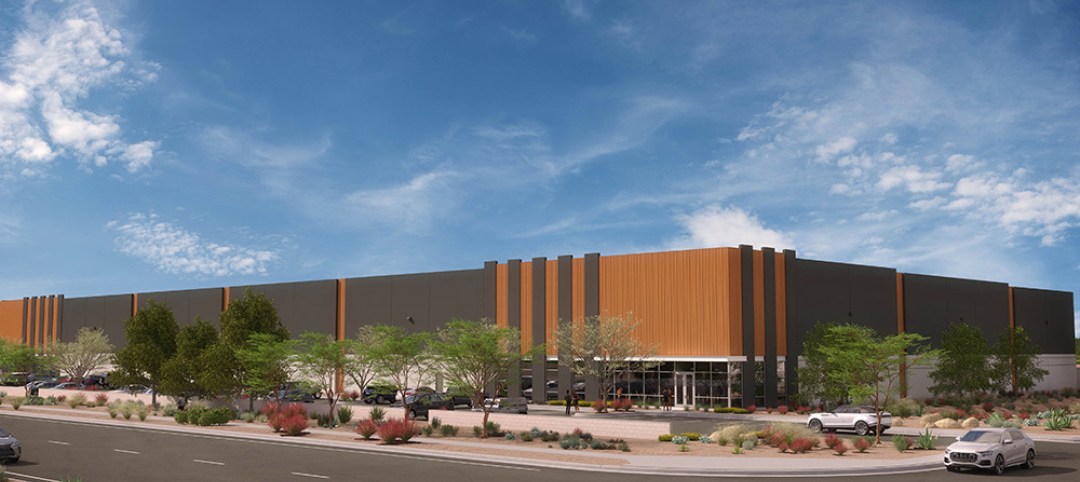Truth be told, for all parties involved in a construction project, it’s the bottom line that's the top concern. Owners and developers, architects and engineers, general contractors and subs, and consultants—every member of the team is ultimately—if not overtly—focused on the project’s profitability.
While this is the case, conventional approaches to cost estimating that many owners and developers have come to rely on may not always yield the best or expected results that benefit all parties. Budget shortfalls can often happen when they rely on data that is outdated, or when obtaining costs from a single source without enlisting a second pair of eyes to provide independent assessments and monitoring of budgets.
An alternative—working with an independent cost manager—may be a new concept for some owners, but holds far greater promise of saving them [and their team members] money and time. By treating the client’s investment as if it were their own, and actively serving as the client’s advocate, an independent cost manager adds quantifiable value to their work. Engaging a cost manager in the earliest stages of a project has a relatively modest impact on the process and timeline and can help to avoid snowballing setbacks as the project progresses.
Here’s a checklist of some key go/no-go indicators that cost managers use to put a project on the road to profitability:
- Scheduling. Hindsight may be 20/20, but in construction, foresight offers greater value. Cost managers use both historical and predictive data to determine the best time to break ground on a project and calculate its duration. Drawing on their knowledge of manufacturing and global logistics, cost managers can chart a reliable course for timely sourcing and procurement, resulting in an optimal schedule that appropriately captures project delivery risks.
- Market conditions. To make the most of investment dollars and establish a favorable financing environment, cost managers factor in real estate trends and cost variances for different locations. As part of the due diligence process in the early stages of a project, a cost manager can also advise clients on the programming of a building. Replacement cost estimates can reveal a building’s true value in the market, maximizing its selling value. This allows owners to see if the numbers work, and to make a go/no-go decision on the path forward.
- Procurement. A conscientious cost manager can advise their client about the advantages and disadvantages of a variety of alternative construction delivery systems, such as design-bid-build, design-assist, and design-build, helping them select the method that best aligns with their budget and schedule goals.
- Pricing. Lately, material, labor, and equipment costs have been exceptionally volatile. Unlike contractors and sub-contractors who draw solely on their past experience from the builder’s perspective to guesstimate these prices, cost managers minimize unexpected and unwelcome budget disruptions by using highly targeted, real-time data to accurately project future pricing trends. This forms the basis for creating a provisional budget for the various project-building components [i.e., structural system, exterior wall, lighting, and HVAC systems], an essential tool for developing and analyzing the project construction budget.
Watching for Red Flags
If a cost manager isn’t on board for the initial stages of the project, there are still opportunities to enlist their aid; in fact, there are critical situations when reaching out to an independent cost manger can mean the difference between a successful, profitable project and a resource-sapping undertaking. These three red-flag scenarios include:
- “Free” estimates. Often offered as an incentive for prospective clients by contractors, free cost estimates are frequently based on non-competitive data from a single source that may not reflect current dollar values or cost influencers, and therefore may not equate to a comprehensive construction cost. Third-party cost managers work only with fresh data—in many cases, proprietary—that accounts for current market conditions, is tailored to the needs of specific projects, and provides realistic cost information throughout the course of a project.
- Doubts from the design team. If the design team says the budget is inadequate, there is an opportunity to mitigate that before resorting to value engineering. Working directly with the design team, a cost manager can guide them through the process of identifying and selecting alternative solutions that won’t derail the design—or the budget.
- Rapid cost escalation in design-build projects. The efficiencies of the design-build delivery method are predicated on an accelerated schedule and a reduction in change orders. If there is a delay in any phase of the process, costs can quickly soar. A cost manager can step in and make new budget projections that can help reduce loss.
Once a cost manager has created the optimal scenario for the project, it’s a “Go” to the design phase. Having prepared cost estimates based on the schematic design documents, design development documents, and construction documents, the cost manager can provide guidance to the design team related to the cost impact of design decisions throughout the design process. Armed with this information, a realistic budget can be created, giving the design team a solid foundation on which to build, and minimizing budgetary surprises as the project moves into construction.
With construction costs typically making up about 70% of an owner’s budget in a project, there’s a lot at stake in a building project. When engaged at the outset of the job, a proactive cost manager will not just protect that investment, they will identify ways to increase the profit margins throughout the process. There’s little doubt that engaging a third-party cost manager adds a small cost up-front, but it will yield a larger payback; one that also pays it forward in terms of client service.
Related Stories
Products and Materials | Jan 31, 2024
Top building products for January 2024
BD+C Editors break down January's top 15 building products, from SloanStone Quartz Molded Sinks to InvisiWrap SA housewrap.
Giants 400 | Jan 29, 2024
Top 140 Office Core and Shell Architecture Firms for 2023
Gensler, Stantec, Page Southerland Page, Perkins&Will, and NBBJ top BD+C's ranking of the nation's largest office core and shell architecture and architecture engineering (AE) firms for 2023, as reported in the 2023 Giants 400 Report.
Giants 400 | Jan 29, 2024
Top 80 Workplace Interior Construction Firms for 2023
STO Building Group, HITT Contracting, Clune Construction, Hensel Phelps, and JRM Construction Management top BD+C's ranking of the nation's largest workplace interior and interior fitout general contractors and construction management (CM) firms for 2023, as reported in the 2023 Giants 400 Report.
Giants 400 | Jan 29, 2024
Top 100 Office Core and Shell Construction Firms for 2023
Turner Construction, AECOM, DPR Construction, Clark Group, and Clayco top BD+C's ranking of the nation's largest office core and shell general contractors and construction management (CM) firms for 2023, as reported in the 2023 Giants 400 Report.
Mixed-Use | Jan 29, 2024
12 U.S. markets where entertainment districts are under consideration or construction
The Pomp, a 223-acre district located 10 miles north of Fort Lauderdale, Fla., and The Armory, a 225,000-sf dining and entertainment venue on six acres in St Louis, are among the top entertainment districts in the works across the U.S.
Industrial Facilities | Jan 29, 2024
How big-ticket, government-funded investments in industrial developments are affecting private construction companies
Large sums of money remain in bank accounts for government-funded programs like the CHIPS Act, the Infrastructure Investment and Jobs Act, and the Inflation Reduction Act. But with opportunities come challenges.
Senior Living Design | Jan 24, 2024
Former Walgreens becomes affordable senior living community
Evergreen Real Estate Group has announced the completion of Bellwood Senior Apartments. The 80-unit senior living community at 542 25th Ave. in Bellwood, Ill., provides independent living options for low-income seniors.
AEC Tech | Jan 24, 2024
4 ways AEC firms can benefit from digital transformation
While going digital might seem like a playground solely for industry giants, the truth is that any company can benefit from the power of technology.
Giants 400 | Jan 23, 2024
Top 55 Parking Structure Construction Firms for 2023
PCL Construction Enterprises, Swinerton, Bomel Construction, McCarthy Holdings, and Alberici-Flintco top BD+C's ranking of the nation's largest parking structure general contractors and construction management (CM) firms for 2023, as reported in the 2023 Giants 400 Report.
Industry Research | Jan 23, 2024
Leading economists forecast 4% growth in construction spending for nonresidential buildings in 2024
Spending on nonresidential buildings will see a modest 4% increase in 2024, after increasing by more than 20% last year according to The American Institute of Architects’ latest Consensus Construction Forecast. The pace will slow to just over 1% growth in 2025, a marked difference from the strong performance in 2023.

















